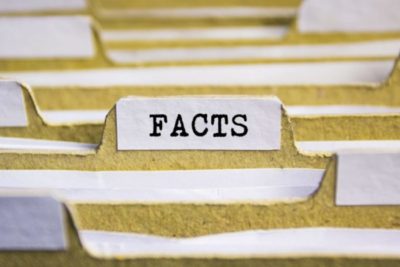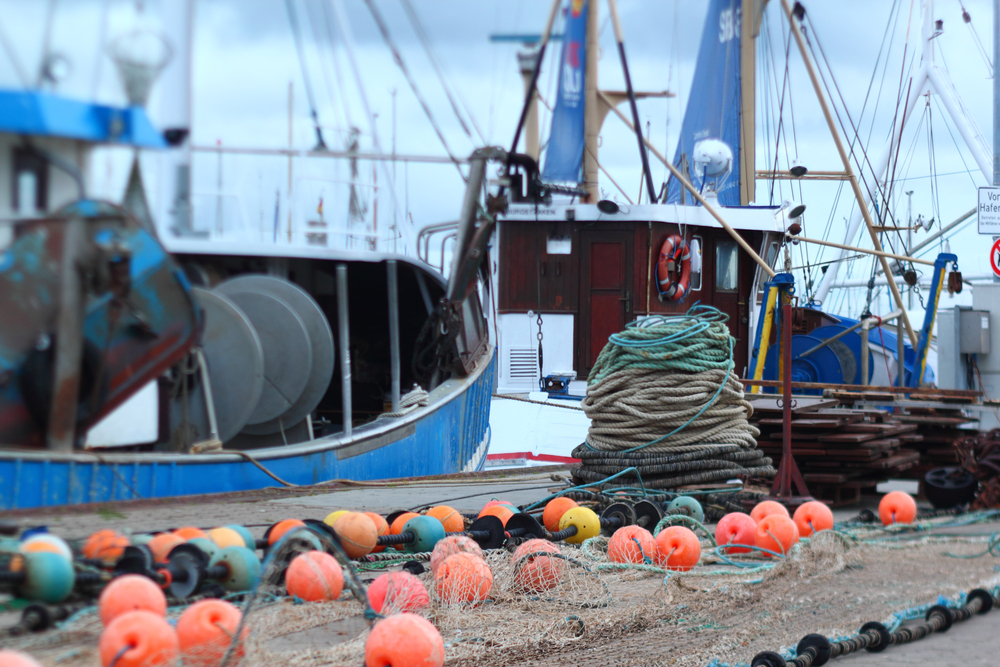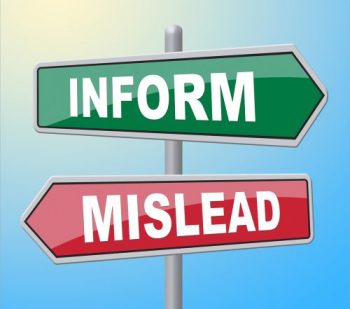All posts by NFI Media
Seaspiracy: Recognizable Propaganda
The concern with some slickly produced propaganda pieces, masquerading as “documentaries,” is that audiences will not recognize the film’s true agenda. Despite the artistic aerial shots, exciting albeit hyperbolic cloak-and-dagger scenes and stirring action-movie like sound track, there is little concern Seaspiracy will be mistaken for anything but a vegan indoctrination movie.
The film begins by suggesting, without evidence, that fisheries bycatch is an issue “governments [have] practically given up on enforcing.” Then touts a narrative that an “internationally recognized seafood label [is] a complete fabrication.” All this before whipsawing viewers from the argument that getting rid of plastic straws was once considered a pollution fix but that now the only real solution is getting rid of the entire commercial fishing sector.
Before long the producers describe a fishing vessel with the caveat that, “what it really is, is a death machine.” They then dive headlong into an embrace of the idea that the oceans will be empty by 2048, which is based on a completely debunked 2006 statistic, refuted by none other than the author of the original study. The 2048 statistic was put to rest by a follow-up report in the Journal Science released in 2009 under the title New hope for fisheries.
Gravitating towards the popular call to ban fishing in 30% of the oceans by 2030, the film turns to an author, who owns a vegan food company, an animal rescue sanctuary and is also apparently a dentist. His endorsement of the 30 by 30 slogan/policy is based on his calculation that, “in reality, less than 1% of our oceans are being regulated.” This is of course not only inaccurate it’s nonsensical. But it doesn’t end there. He goes on to compare choosing fish based on some eco labels to, “essentially saying it’s more sustainable to shoot a polar bear than shooting a panda.”
During a segment on Illegal, Unregulated and Unreported fishing in Africa director Ali Tabrizi claims, “In the United States up to 1 in every 3 wild caught fish imported have been caught illegally and therefor sold illegally. Stolen, often from countries in most need.” The methodology behind this wildly inflated statistic has been picked apart in the very Journal where it first appeared; “Methods to estimate IUU are not credible.” Meanwhile, papers using the same approach have been retracted. While IUU is a serious issue and unacceptable at any level, Tabrizi’s calculated film making seeks to conflate over estimated IUU numbers with U.S. seafood imports from Africa. The National Oceanic and Atmospheric Administration reports less than 2% of U.S. seafood imports come from Africa.
Before setting their sites on aquaculture, the filmmakers can’t help but slip in a vegan dog whistle in describing fishing boats they say “…It became clear these vessels were more like floating slaughter houses.”
Adeptly leading viewers down the primrose path, fish farming is lauded as a potential “method that could provide some kind of solution” before it is eviscerated with out of date tropes like the lie that farmed salmon is died pink. The film later digs up another classic in complaining about PCB’s in fish but never (ironically) mentions that Harvard University research finds seafood broadly, not just farmed salmon, makes up only 9% of the PCBs in the average American diet, while products like vegetables make up 20%. Yes, vegetables.
As the film begins its expected arch into unabashed vegan rhetoric about fish feeling pain and how, “animals… use democratic decision making,” it logs a chapter about labor abuses in the seafood space. This is a serious and concerning topic that the filmmakers bring nothing new to. While their interviews with silhouetted victims are heartbreaking, what is really on display here is, as the New York Times put it, a “cheap imitation of hard-hitting investigative journalism.”
In the end the film sputters to a close with what is essentially a predictable commercial for highly processed plant-based alternative products.
Patagonia’s Seafood Sustainability Misses the Boat
In May of 2019, the Patagonia clothing company launched a marketing effort masquerading as an eco-campaign and they’re back at it again. People know they sell fleeces. But few know they also sell fish. Its niche salmon may be a decent product. While the company sells $700 parkas, Patagonia’s seafood sustainability almost completely misses the boat.
Wild salmon should be celebrated for its unique flavor. But attacking science-based hatcheries or well-managed aquaculture operations in the process ignores global food security needs and some of the best-managed fish stocks on the planet.
Patagonia’s Panacea?
According to the sweater maker, curtailing or closing fisheries that utilize hatcheries and shutting down aquaculture efforts is an on-ramp on the road to panacea. And perhaps it is if that road leads only to the waters frequented by fly-fishing, Patagonia-wearing sports men and women. Because without advanced hatcheries and well-run aquaculture efforts many fisheries in pristine places like Alaska would effectively shut down. Starving consumers of healthy protein and putting whole communities out of work.
Sustainability Science
Scientists and experts who understand seafood sustainability know farmed and wild fish can co-exist. There’s room in the market and a vital need for both. Campaigns that promote efforts to take wild fish only from small, targeted spots are perfect for a company whose clientele don’t mind paying $300 for a hoodie …. but it is not sustainable nor will it feed the world.
The simple fact is, we can’t take more fish from wild-capture fisheries to meet the increasing demand for seafood. Science-based restrictions are designed to ensure the sustainability of those stocks. We need hatcheries and aquaculture to feed the planet. The UN Food and Agriculture Organization estimates as many as 3 billion people rely on wild-caught and farmed seafood as their primary source of protein. According to the National Oceanic and Atmospheric Administration, “globally, aquaculture supplies more than 50 percent of all seafood produced for human consumption—and that percentage will continue to rise.”
Marketing a Myth
Trafficking in hyperbole to market an exclusive product to affluent customers, so they feel like they’re part of the solution, is not crusading for sustainability it’s marketing a myth.
Facing Facts: Coronavirus, Food Safety and The Media
Coronavirus is a deadly pandemic that should be taken seriously. There is no question about that. However, how the media reports on it and the studies that purport to offer insight into it need to take the same sober and detailed approach or risk presenting misinformation.
A new Fox News headline announces Live coronavirus found on meat, seafood weeks later, researchers say.
Let’s unpack this
For starters, the report out of Singapore and Ireland is not peer reviewed. It also does not conclude that anyone anywhere has ever contracted coronavirus from food or food packaging. Instead, it notes the work simply examines a “hypothesis.”
In fact, the new report itself states clearly, “it can be confidently argued that transmission via contaminated food is not a major infection route.” But experts at the World Health Organization go a step further when they note there is “no evidence to date of viruses that cause respiratory illnesses being transmitted via food or food packaging.”
“People should not fear food, or food packaging”
With no evidence, the authors of this insufficiently tested supposition insinuate that imported food may have contributed to outbreaks in certain countries. All of this in the face of WHO statements that make clear, “people should not fear food, or food packaging or processing or delivery of food.”
Writing on the most up to date and reliable science is important during this pandemic. It is irresponsible to report on research that is not peer reviewed and postulates theories far outside the study’s actual focus.
Experts Say It’s Time to Focus on Facts
Experts in Food Science, like Dr. Lee-Ann Jaykus (William Neal Reynolds Distinguished Professor, NC State University), note how important it is to keep the focus where the most good can be done; “The overwhelmingly higher and most significant mode of disease transmission is through exchange or release of respiratory droplets laden with the virus, with transmission facilitated by close contact to an infected individual actively shedding the virus. Expending resources on unsubstantiated foodborne routes threatens our efforts to focus on control strategies we know work against respiratory spread.”
Greenpeace Report Just Fundraising Clutter
The always-effective combination of hyperbole from Greenpeace and laziness by journalists is percolating through the media with myriad stories about Greenpeace’s new report Ghost Gear: The Abandoned Fishing Nets Haunting Our Oceans.
Here’s an example of ignorant reporting fueled by activist rhetoric designed to motivate people to… clean up the oceans? No… to give money to Greenpeace.
Really Not What the Report Says
The headline screams Dumped fishing gear is biggest plastic polluter in ocean, finds report. The only problem is the report does not find that. In fact, Greenpeace’s own report finds fishing gear only accounts for 10% of plastic waste in the oceans. How is that the “biggest plastic polluter?” Ninety percent of the plastic pollution comes from other sources and yet the headlines read Fishing crews to blame for much of the plastic in the world’s oceans, Greenpeace says.
On one page the report even illustrates the issue with a large photo of a crab apparently trapped in a plastic drinking cup. Unless there’s been a drastic change in crab fishing strategy, that we’re not aware of, plastic drinking cups are not fishing gear.
Greenpeace Late to the Party
As usual, Greenpeace is late to the party and attempting to raise money for itself off an issue that literally dozens of other NGO’s, corporations and institutions have been focused on. Efforts to promote technologies and enterprises that turn plastic fishing waste into valuable resources are underway and entire summits are devoted to technological innovation focused on solutions to prevent gear from entering the oceans in the first place.
Just More Clutter
Greenpeace’s latest fundraising report is just more clutter.
Consumer Reports Inches Closer To Accuracy
Consumer Reports is out with its new Guide to Healthy Seafood Choices and the magazine, better known for ranking speakers and lawn mowers, actually stumbles onto some good advice.
Please keep in mind, the fact that editors at Consumer Reports have read and regurgitated widely available and understood advice on seafood does not make the publication a genuine health and nutrition resource by any stretch of the imagination. But for a publication that has so fundamentally botched this type of advice in the past at least it shows an evolution towards mainstream science and away from tinfoil hat wearing, precautionary principal nonsense that was doing more harm than good in the nutrition space.
Consumer Reports highlights
- “Fish is loaded with nutrients that are crucial for healthy aging”
- “And it has more vitamins B12 and D—necessary for brain health and bone health, respectively—than any other food you can eat”
- “To get the health benefits of omega-3s, the American Heart Association recommends eating at least two 3½-ounce servings of nonfried fish per week.”
The magazine stumbles through some of its usual inaccurate clutter but there is a limited amount of evidence to suggest that its reporters are using at least some more reliable nutrition information these days.
Lab Grown Reporting: The Future of Fish or the Land of Make-Believe
Los Angeles is called Tinsel Town because of the glitz, glamour, sizzle and style created by the hyperbole machine that is the movie business. It’s an industry that literally thrives on the magnification of made up stories. That’s why we should not be surprised that the Los Angles Magazine feature As Wild-Caught Species Vanish, Are Lab-Grown Fish the Future? is over flowing with, at times, laughable sensationalism.
The subject matter itself is fascinating and the reporting on Silicon Valley’s race to produce the first commercially viable cell-based seafood product is captivating. The narrative is even complete with competing food tech operations taking veiled swipes at each other or even overtly cursing one another. It’s quite the Hollywood tale.
But like many a movie it also has a fictional yarn woven throughout that is over the top and not true. However, unlike the silver screen, Los Angles Magazine is not asking readers to suspend disbelieve, it’s presenting it as fact.
A World Without Fish?
The reporter openly states that a world without sea bass, frozen salmon and even perhaps the most sustainably harvested wild-caught fish on the planet, Alaska Pollock, is “the future.” Calling it “joyless, hopeless, fishless.” Insisting that according to unnamed scientists the “fish apocalypse” is upon us and apparently, only lab-grown fish can save us.
Only in Hollywood do those types of nonsensical over-statements make it to print without any editorial oversight.
The topic of cell-based seafood and feeding the masses is an interesting and important one and deserves to be explored, but factual reporting about seafood sustainability should be included in that dissection.
A Blockbuster Beginning
The article starts by giving readers insight into the legitimately troubled sustainability story of the Bluefin tuna, a sushi delicacy that sells for hundreds of dollars per pound, 80% of which is consumed in Japan. That’s like profiling gas mileage concerns for U.S. commuters… but only ones who drive the Lamborghini Aventador. Bluefin is far from the poster child for seafood sustainability, but it’s also not close to your average seafood meal.
Ironically, Alaska Pollock is the quintessential seafood meal – found in fish sticks at the grocery store to fish fillets sandwiches at quick service dining, but here Los Angles Magazine sticks to its the sky is falling narrative insisting, inexplicably, that pollock’s days are numbered and depletion and extinction are perhaps inevitable. Simple research would find that U.S. regulators publically recognize that Alaska Pollock is not overfished and actually maintains populations above the target levels. What’s more the fishery is cited for having “minimal impact on habitat” and is called “one of the cleanest” in terms of bycatch. Yet over and over the sustainability screenplay insists on a death knell for this fish.
Mid Movie Yawn
To add to the bleak profile of seafood, the article attacks aquaculture making lazy, inaccurate assertions, like: farmed salmon is dyed with artificial colors. It is not. In fact, CNN’s Chief Medical Correspondent, Dr. Sanjay Gupta, devoted an extraordinary amount of time and research into an expose for 60 Minutes about farmed salmon where he explained that the “dyed” salmon narrative was simply a myth that needed rebutting: “It’s not accurate to call these artificial dyes. I think people conjure up this image of the farm salmon being injected with something that causes it to turn that pink color. That’s not what’s happening here. It’s a much more natural occurring process where the farmed salmon eat a type of food that causes a reaction in the body, just like the wild salmon does, and that causes that more pinkish color.”
The perennial PCB’s in fish “concern” is regurgitated as well. The reality is that Harvard University research finds seafood broadly, not just farmed fish, makes up only 9% of the PCB’s in the average American diet, while products like vegetables make up 20%. Would Los Angles Magazine suggest its readers eat fewer vegetables?
Just the Facts Ma’am
The National Oceanic and Atmospheric Administration reports that 91 percent of the stocks it manages are free from overfishing and a study in the Proceedings of the National Academy of Science illustrates how 82% of the fish we actually eat come from sustainable stocks. Meanwhile, despite challenges, the UN calls the fisheries sector “crucial” to meeting its “goal of a world without hunger and malnutrition.” These facts are left out of this article.
Is it possible to write about the issue of cell-based seafood production without inaccurately suggesting the oceans are almost empty and this fantastic technology is the only hope for a future with fish? It’s possible, but the script doesn’t quite sizzle as much. Perhaps Los Angeles Magazine has forgotten that facts, not fiction, are the cornerstone of journalism.
Attention Reporters: USC Study Has Fatal Flaws
Taking a break from allowing Aunt Becky to bribe her kids’ way into the school, USC is now promoting a new study that looks at dietary recommendations for pregnant women and children regarding foods that could contain environmental contaminants.
The study is academically weak, because it only looks at the risks of consumption of seafood while completely ignoring the benefits, especially during pregnancy/childhood. Protein, vitamins and omega-3’s are totally disregarded. By contrast, you could fill a library with the studies that conclude the benefits of eating fish far outweigh the risks.
Journalists should also be wary and take care in reporting that the study focuses on “six European countries,” not the United States, a vital distinction that could get lost in casual reporting.
Here’s why it’s so important with regard to the fish findings. The study’s conclusions are only relevant to a scenario in which hypothetical harms would be reduced if “pregnant women and children did not exceed the current dietary recommendation for fish.” In the U.S., pregnant women are encouraged to eat 12 ounces of fish per week, but the Food and Drug Administration finds they eat only 1.89 ounces, far below the threshold level for benefits, let alone risk.
Suggesting that the study has repercussions for American women and children, whose consumption levels are known to be worrisomely low, is both unwarranted and potentially dangerous. It’s like saying a road might be safer if the speed limit were not raised from 55 to 65 mph, ignoring the fact that the average motorist on that road is traveling at only 8.66 mph.
Pregnant women should be working to increase their seafood consumption, not decrease it.
For accurate facts about seafood and pregnancy visit youtube.com/aboutseafood
Proper Perspective on the Latest Mercury Study
A new study focused on climate change, fishing and mercury in cod and bluefin tuna has sparked a bit of hyperbolic reporting that lacks a complete understanding of the findings and often ignores needed perspective.
Not A Study About Humans
First and foremost this is a study about mercury in fish. Not a study about mercury in humans. This is not a consumption study. It contains no empirical findings about human health. It did not study human health.
Meanwhile, the authors are clear that their research is designed to illustrate what they see as global warming impacts on ecosystems and is not designed to have consumers conclude they should, “stop eating seafood, which is very healthy, nutritious food” (Elsie Sunderland, professor of environmental chemistry Harvard University School of Public Health.)
Needed Perspective
Now, let’s include some much needed perspective. Headlines tell readers that the study finds concentrations of mercury in some cod have risen 23%. What’s important to note is the average level of mercury in cod to begin with. The FDA finds the average amount of mercury in cod is 0.111 ppm. The FDA’s limit for mercury in fish is 1.0ppm and that has a ten-fold safety factor built in. Making the level of concern 10.0ppm.
With this increase some of the cod tested would have a mercury level of 0.136ppm. That’s still more than 7 times lower than the FDA’s limit and 73 times lower than any level of concern.
Science Is Vital But So Is Accurate Reporting
While science is vitally important, how it’s reported on in the media sometimes devalues its conclusions or perhaps purposely skews them for a more click-friendly appeal. Take for instance the finding that there appears to have been a 27% increase in mercury levels found in bluefin tuna in the Gulf of Maine, over a 30-year period. Scientifically, that’s interesting. But nutritionally that has little to no impact whatsoever because per capita American’s eat about the weight of a few paper clips worth of bluefin tuna each year.
The conclusions of this study are not about human health and mercury consumption and it should not be reported on that way.
Patagonia Marketing Masquerades as Eco-campaign
Artifishal: Patagonia Marketing Masquerades as Eco-campaign
 The importance of salmon to lives and livelihoods should not be underestimated. The nutritional components of salmon are a dietary wonder that can stave off heart disease and literally help people live longer. Work to harvest wild salmon, enhance salmon fisheries through hatcheries and raise farmed salmon are all part of an effort to feed a growing planet.
The importance of salmon to lives and livelihoods should not be underestimated. The nutritional components of salmon are a dietary wonder that can stave off heart disease and literally help people live longer. Work to harvest wild salmon, enhance salmon fisheries through hatcheries and raise farmed salmon are all part of an effort to feed a growing planet.
Fatally Flawed Promotional Material: Artifishal
Promoting ecological stewardship is an important effort and those committed to fair, honest and thorough examination of the balance between conservation, production, nature and nutrition should be lauded.
However, it is important to remember, real sustainability rests on three pillars; economic, environmental and social. Promotional material that fails to consider all three of these is fatally flawed and often even designed to inject unhelpful hyperbole into an otherwise worthwhile discussion.
Saving Salmon… or Selling Salmon?
What’s worse, slickly produced marketing efforts masquerading as eco-campaigns, designed to sell alternative commercial salmon products, discredit a meaningful sustainability dialogue.
The countless men and women who support their families, and feed others’ families, via the many facets of the salmon community deserve better.













